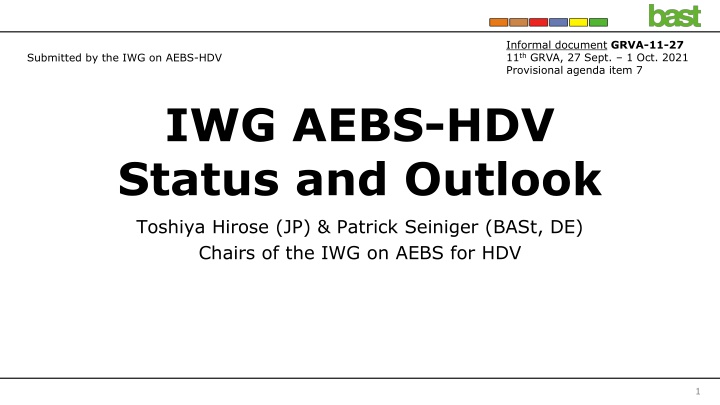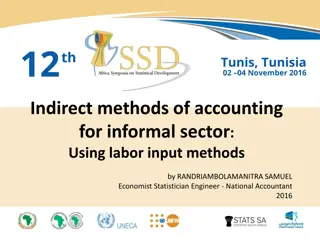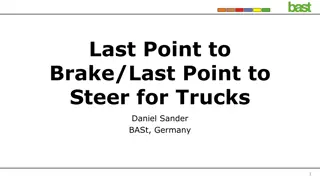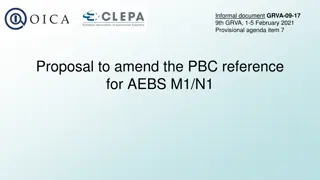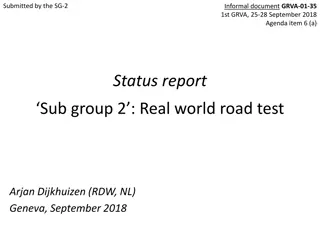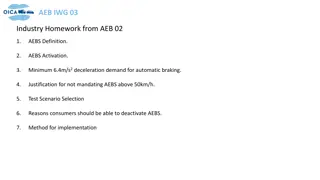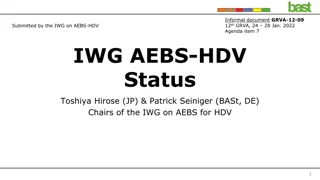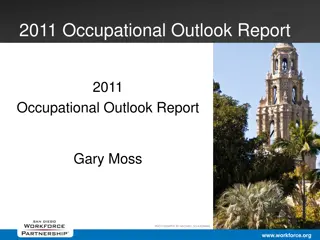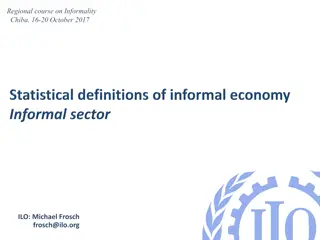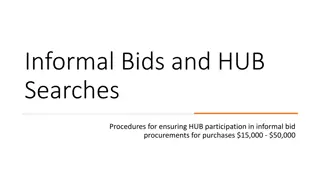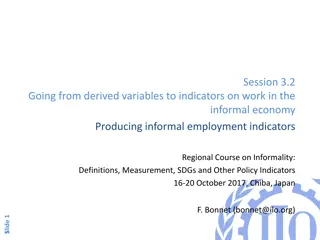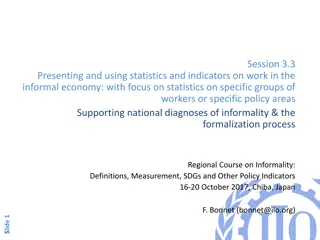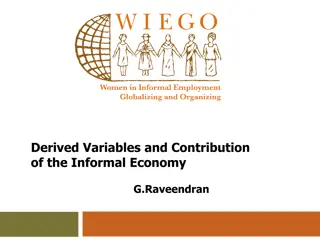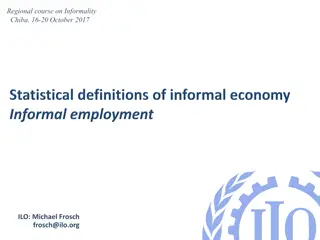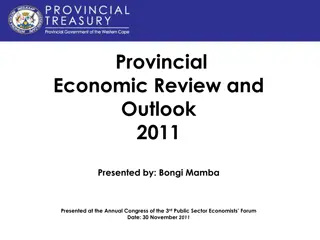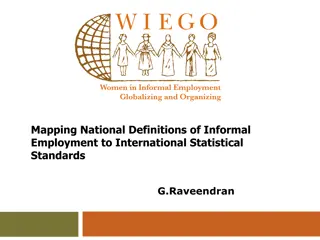Informal Working Group on AEBS-HDV Status and Outlook
The Informal Working Group on AEBS-HDV provides an update on its current status and future outlook. Following 6 meetings, progress has been made in developing a draft regulatory proposal to revise UN Regulation No. 131. The upcoming meeting aims to clarify open issues, complete remaining sections, and prepare for presenting a working document in February. The group also reached an agreement on performance criteria for various vehicle categories.
Download Presentation

Please find below an Image/Link to download the presentation.
The content on the website is provided AS IS for your information and personal use only. It may not be sold, licensed, or shared on other websites without obtaining consent from the author.If you encounter any issues during the download, it is possible that the publisher has removed the file from their server.
You are allowed to download the files provided on this website for personal or commercial use, subject to the condition that they are used lawfully. All files are the property of their respective owners.
The content on the website is provided AS IS for your information and personal use only. It may not be sold, licensed, or shared on other websites without obtaining consent from the author.
E N D
Presentation Transcript
Informal document GRVA-11-27 11thGRVA, 27 Sept. 1 Oct. 2021 Provisional agenda item 7 Submitted by the IWG on AEBS-HDV IWG AEBS-HDV Status and Outlook Toshiya Hirose (JP) & Patrick Seiniger (BASt, DE) Chairs of the IWG on AEBS for HDV 1
Introduction Informal Working Group on AEBS-HDV was initiated by GRVA in September 2021 ToR requests an updated regulation per GRVA in February 2022 ToR asks for a dedicated report to GRVA in September 2021 with special emphasis on whether this timing can be met 2 Toshiya Hirose & Patrick Seiniger
Current Status of IWG (accomplished, running) IWG had 6 meetings (last meeting: September 21/22) Main task: develop a draft regulatory proposal to revise UN Regulation No. 131 a) Assess the accident situation for heavy duty vehicles b) Investigate the feasibility of a generic marker triggering AEBS c) Define state of the art performance requirements d) Review the values for the target speed reduction for M2and N2 e) Review AEBS on V2Car, V2Ped, V2Bicycle, others f) Incorporate as relevant new concepts from UN Regulation No. 152 Current activity and status: Writing draft regulation, basically finished (open issues left, see following slides) up to and including section 5 (specs) 3 Toshiya Hirose & Patrick Seiniger
Outlook Next meeting: October 26-28 (in total 9 hrs) Core activities of AEBS-HDV-07 Clarify open issues after feedback from GRVA-11 Finish remaining sections 6 (testing), 12 (transitional provisions) and Annex 3, Appendix 2 (false reaction scenarios) Prepare working document for GRVA in February Buffer: Meetings in Nov, Dec, Jan to prepare an informal document amending the working document Timing goal will be achieved 4 Toshiya Hirose & Patrick Seiniger
Agreement on Performance AEB Vehicle- Vehicle AEB Vehicle- Bicycle Vehicle category AEB Vehicle-Pedestrian derived from M1N1 Hydraulic braking 50 km/h (R152 as alternative) 26 km/h (R152 as alternative) - (no systems) Hydraulic braking (inclu- ding M3) M2 N2 < 8t 35 km/h 20 km/h - (no systems) derived from / based on heavies 70 km/h 40 km/h (urban) Pneumatic braking 20 km/h - (no systems) N2 > 8t M3 (except hydraulic braking) N3 70 km/h 40 km/h (urban)* 20 km/h - (no systems) This is relative speed v0,Ego-v0,Target, up to which avoidance would be required. Mitigation speeds also required, comparable to R152 No differentiation Moving/Stationary Ambition for higher values and AEB Vehicle-Bicycle will be expressed in a preamble. 5
Open issues Deactivation of AEBS An agreement on the deactivation procedure is not yet reached Specifically: Deactivation possible only below 10 km/h from R152 Request for guidance from GRVA-11 Definition of performance requirements As in R152, performance requirements are given together with boundary requirements Different interpretations of the text (copied from R152) possible See next two slides for an introduction After clarifying, the text in R152 might need to be aligned as well. 6 Toshiya Hirose & Patrick Seiniger
Performance Reqs (comparable to R152) 5.2.1.4. Speed reduction by braking demand In absence of driver s input which would lead to interruption according to paragraph 5.3.2., the AEBS shall be able to achieve a relative impact speed that is less or equal to the maximum relative impact speed as shown in the following table: (a) For collisions with unobstructed and constantly travelling or stationary targets; (b) On flat, horizontal and dry roads affording good adhesion; (c) No trailer is coupled to the motor vehicle and the mass of the motor vehicle is between maximum mass and mass in running order conditions; (d) Condition list in which the requirements have to be fulfilled It is recognised that the performances required in this table may not be fully achieved in other conditions than those listed above. However, the system shall not deactivate or unreasonably switch the control strategy in these other conditions. This shall be demonstrated in accordance with Annex 3 of this Regulation. How to treat situations when conditions above are not met Performance requirements in conditions above [ Performance requirements table ] 7 Toshiya Hirose & Patrick Seiniger
Problem Description Clear: Not all conditions (a) ( ) are fulfilled Performance targets not required, but changing strategy not allowed Unclear All conditions (a) ( ) are fulfilled An additional parameter (e.g. lane markings, lamp posts, fog, anything else) is introduced How to deal with parameters not explicitly listed in the requirements, but obviously influencing the performance? Request for Guidance from GRVA: What is GRVA s interpretation? 8 Toshiya Hirose & Patrick Seiniger
Summary Performance requirements agreed within the group Timing target will very likely be met; progress is good and buffer for unforeseeable difficulties is considered Request for guidance from GRVA: 1. Deactivation of AEBS possible at speeds > 10 km/h or not? 2. Interpretation of condition list w.r.t. performance requirements and conditions 9 Toshiya Hirose & Patrick Seiniger
